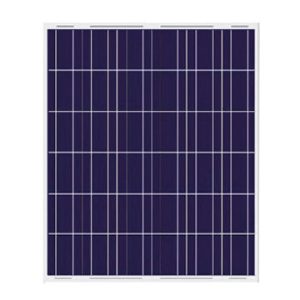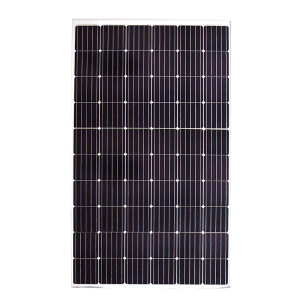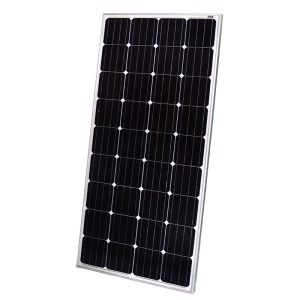In today’s rapidly evolving energy landscape, 7.2 Kw Solar Panels stand as a beacon of sustainability and efficiency. As the world grapples with climate change and depleting fossil fuels, solar energy emerges as a viable alternative. This article aims to be your comprehensive guide to understanding, selecting, and installing 7.2 Kw solar panels.
What Are 7.2 Kw Solar Panels?
When you hear the term 7.2 Kw Solar Panels, it’s easy to get lost in the jargon. However, understanding this concept is crucial for anyone considering a transition to solar energy. These are not just any solar panels; they are photovoltaic systems meticulously engineered to generate a specific amount of power—7.2 kilowatts, to be exact.
The Power Output: What Does 7.2 Kilowatts Mean?
In layman’s terms, 7.2 kilowatts (Kw) is the unit of power that these solar panels are designed to produce. To put it in perspective, this is sufficient to power a medium-sized home that uses approximately 30-40 kWh per day. For small commercial establishments, a 7.2 Kw Solar Panel System can cover the majority of daily operations, including lighting, heating, and even some machinery.
Material Matters: Monocrystalline vs. Polycrystalline vs. Thin-Film
The efficiency and durability of your 7.2 Kw Solar Panels largely depend on the material they are made of:
- Monocrystalline Panels: Crafted from a single crystal structure, these panels offer the highest efficiency rates—up to 22%. They are also sleek and aesthetically pleasing but come with a higher price tag.
- Polycrystalline Panels: These are made from different crystal structures, making them slightly less efficient—around 13-16%. However, they are more affordable, making them a popular choice for budget-conscious consumers.
- Thin-Film Panels: These panels are the least efficient, with rates hovering around 10-12%. However, they are highly flexible and can be used in a variety of applications, including curved surfaces and lightweight structures.
Why Choose a 7.2 Kw Solar Panel System?
The decision to opt for a 7.2 Kw Solar Panel System is not one to be taken lightly. It’s not just about ‘going green’; it’s a long-term commitment that comes with a plethora of benefits.
Reduced Electricity Bills: A Financial Uplift
One of the most immediate benefits you’ll notice is a significant reduction in your electricity bills. On average, a 7.2 Kw system can save you around $150 to $200 per month, depending on your location and electricity rates.
Sustainability: More Than Just a Buzzword
When you install 7.2 Kw Solar Panels, you’re making a conscious choice to reduce your carbon footprint. Solar energy is renewable, meaning it won’t run out, unlike fossil fuels. By switching to solar, you’re contributing to a more sustainable future for the planet.
Low Maintenance: Set It and Forget It
Contrary to popular belief, solar panels require minimal maintenance. A semi-annual cleaning and occasional inspection by a certified technician are generally sufficient to keep the system running smoothly.
Tax Benefits: The Icing on the Cake
Many governments around the world offer tax incentives and rebates for installing solar panels. In the United States, for example, you can benefit from the Federal Solar Tax Credit, which can cover up to 26% of the installation costs.
Components of a 7.2 Kw Solar Panel System
A 7.2 Kw Solar Panel System is not just a collection of solar panels; it’s a complex arrangement of several components that work in harmony to convert sunlight into usable electricity. Understanding each component is crucial for anyone considering this investment.
Solar Panels: The Heart of the System
The Solar Panels are the most visible and primary components of the system. They are responsible for capturing sunlight and converting it into direct current (DC) electricity. The quality of the panels you choose will directly impact the system’s efficiency. High-quality panels can last up to 25-30 years with minimal degradation in performance.
Panel Ratings and Efficiency
Solar panels come with different efficiency ratings, usually between 15% and 22%. The higher the efficiency, the less space you’ll need for the panels, which can be a significant advantage for properties with limited roof space.
Inverter: The Brain Behind the Operation
The Inverter is a critical component that converts the DC electricity generated by the solar panels into alternating current (AC) electricity, which is what most home appliances use. There are three main types of inverters:
- String Inverters: Suitable for systems where panels receive uniform sunlight.
- Microinverters: Ideal for systems where each panel may receive different levels of sunlight.
- Hybrid Inverters: These can handle both solar and battery storage.
Battery: The Energy Reservoir
The Battery stores excess energy generated by the solar panels for later use. This is particularly useful during nighttime or cloudy days when the panels are not generating electricity. Batteries come in various types, such as lithium-ion, lead-acid, and flow batteries, each with its pros and cons.
Mounting System: The Backbone
The Mounting System holds the solar panels in place, whether on your roof, ground, or any other structure. The type of mounting system you choose—fixed, tracking, or adjustable—can affect the system’s overall efficiency.
Monitoring System: The Oversight Mechanism
A Monitoring System is often included to keep track of your solar panel system’s performance. This system provides real-time data on energy production and consumption, allowing you to optimize your energy usage.
Cost-Benefit Analysis
Investing in a 7.2 Kw Solar Panel System is not just about spending money; it’s about making an investment that pays dividends over time.
Initial Costs and Financing Options
The initial cost of a 7.2 Kw system can range from $15,000 to $25,000, depending on various factors like the quality of components and installation charges. Many financing options are available, such as solar loans, leases, and power purchase agreements (PPAs).
Return on Investment (ROI)
The ROI for a 7.2 Kw system is generally around 5-7 years. This period can vary based on electricity rates, geographic location, and available solar incentives. After the ROI period, the electricity generated is essentially free, leading to substantial long-term savings.
Installation Guide: Your Roadmap to Solar Independence
Installing a 7.2 Kw Solar Panel System is not a DIY weekend project; it’s a meticulous process that requires professional expertise and careful planning. Here’s a step-by-step guide to ensure a smooth installation.
Site Assessment: Laying the Groundwork
Before you even purchase your solar panels, a Site Assessment is crucial. A certified solar installer will visit your property to evaluate various factors:
- Solar Access: How much sunlight does your property receive?
- Roof Condition: Is your roof strong enough to support the panels?
- Energy Needs: How much electricity does your property consume?
Based on these factors, the installer will recommend the best location and orientation for the panels.
Permitting: Navigating the Red Tape
The Permitting process can be cumbersome but is essential for legal compliance. You’ll need to acquire several permits:
- Building Permit: From your local municipality.
- Electrical Permit: To ensure the system meets electrical codes.
- Utility Approval: From your electricity provider for grid connection.
Installation: Where the Magic Happens
The Installation phase is where your solar dreams start to materialize. A team of skilled technicians will:
- Install Mounts: The first step is to install the mounting system.
- Place Panels: The solar panels are then securely attached to the mounts.
- Wire the System: All electrical connections are made.
- Install Inverter: The inverter is installed and connected to the panels.
Testing: The Moment of Truth
After installation, Testing is conducted to ensure the system is operational and efficient. This involves:
- System Check: A thorough inspection of all components.
- Performance Test: To ensure the panels are generating the expected output.
- Grid Connection: The system is connected to the electrical grid, if applicable.
Maintenance and Troubleshooting: A Stitch in Time
Maintaining your 7.2 Kw Solar Panel System is less about repair and more about prevention. Regular cleaning and inspections can go a long way.
- Cleaning: Dust and debris can reduce efficiency; a semi-annual cleaning is generally sufficient.
- Inspections: Annual inspections by a certified technician can help identify and prevent potential issues.
Case Studies: Proof in the Pudding
Real-world applications of 7.2 Kw Solar Panel Systems demonstrate their versatility and efficiency.
Case Study 1: The Californian Homeowner
A medium-sized home in California installed a 7.2 Kw system and reported savings of $200 per month on electricity bills. The system paid for itself in less than six years, thanks to state incentives.
Case Study 2: The New York Small Business
A small business in New York opted for a 7.2 Kw system and achieved an ROI in just 4 years. The system not only reduced operational costs but also enhanced the company’s reputation as a green business.
Conclusion
7.2 Kw Solar Panels are an excellent investment for anyone looking to make a sustainable and financially sound decision. From reducing electricity bills to contributing to a greener planet, the benefits are manifold. Make the switch today and power your future sustainably.



